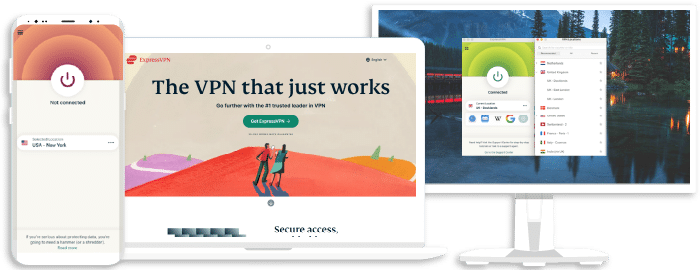What Is A WebRTC Leak and How Can You Protect Yourself?

The internet is great for so many reasons. There are so many services at your disposal, and they’re usually easily accessible. However, in using many of these services, many people aren’t aware of the security and privacy threats they might be exposed to.
A WebRTC leak is one privacy concern that most people online aren’t aware of. This article will discuss what WebRTC is, what it means to suffer a WebRTC leak, and other important stuff you should know.
What Is WebRTC?
WebRTC means Web Real-Time Communication. It is a set of open-source technologies that facilitate voice, video chat, and P2P sharing on browsers without extensions, add-ons, or intermediate servers. WebRTC reduces the lag during live streaming, file transfers, online calls, or video chat. It also increases the speed of such connections.
WebRTC runs on mobile and computer-based applications and browsers using JavaScript to make real-time communications possible without external plugins. WebRTC technology depends on external servers to function.
This makes it possible for you to send and receive live video and audio with someone else online without downloading any other software or enabling an extension. WebRTC could be important if you need real-time peer-to-peer connections, but it could compromise your online privacy.
The major vulnerability with WebRTC is that all the websites you visit can have access to your real IP address even with a VPN connection. This is a serious issue, but it is part of WebRTC’s design, and you can’t repair it. So, it is up to you to protect yourself or disable the function completely.
What Is a WebRTC Leak?
With WebRTC, your real IP address is revealed by the ICE (Interactive Connectivity Establishment) protocol and then used to establish a connection with other people through STUN/TURN servers. This means that a third party could use the WebRTC in a browser to discover your real IP address, which will definitely reveal your identity.
Also, STUN requests are not usually detected, and many extensions or add-ons don’t block them. Because of this, a third party could easily track your requests if their STUN servers are configured to use a wildcard DNS record (also known as a wildcard domain).
A WebRTC leak is a weakness that could occur in web browsers such as Google Chrome, Opera, Firefox, and Brave when you’re using a VPN. When it happens, your IP address is no longer protected. This makes it easy for your ISP, hackers, or the government to monitor or exploit your data.
However, it is important to know that WebRTC leaks don’t necessarily mean that there’s a problem with your VPN. Rather, it is an issue with the particular web browser you use.
Web browsers send your requests to STUN servers which return results with your IP address. And since the results are in Javascript, almost anybody can easily access them. Even worse, plugins like AdBlockPlus or Ghostery can’t block the requests.
How Does WebRTC Leak Occur?
VPNs generally secure all kinds of data traffic sent through their secure servers. The best VPNs use robust encryption and security protocols to guarantee your security and privacy. So, you might be wondering how a WebRTC leak could still occur.
Well, WebRTC leaks occur when your communication channels don’t pass through your VPN’s encrypted tunnel. As we mentioned, when this happens, websites and online services have access to your IP address. WebRTC leak could actually occur if you’re using a substandard VPN service.
However, this doesn’t mean that you’re always exposed. Shortly, we’ll show you how you could easily check to see if you’re experiencing a WebRTC leak.
How To Check for a WebRTC leak?
To be safe, you should check to see if your VPN has WebRTC leaks. You can carry out a WebRTC leak test in these short easy steps:
- First, you’ll have to disconnect from any VPN you’re using.
- Visit Google on your browser and search “What’s my IP.” Your real IP address would come up in the result.
- Exit the browser.
- Return to your VPN and reconnect.
- Revisit Google, and repeat step 2.
- If you’re not suffering a WebRTC leak, your IP address would be different this time around.
An alternative process you could try is:
- Launch your VPN client and connect to a secure server.
- Go to your browser, visit BrowserLeaks and use their WebRTC Leak Test Tool.
- If your WebRTC isn’t leaking, you should see an IP address that’s different from your real IP address.
Alternatively, you could visit IP8, WhatIsMyIPAddress, or IPLEAK.NET to conduct the test in step 2. If the results show that you’re experiencing a leak, don’t worry, it’s not a helpless situation. There are certain ways to prevent WebRTC leaks.
How To Prevent WebRTC Leaks
If your WebRTC leak test indicates that you have a leak, or you just want to protect yourself before it happens, there are a couple of ways you can block it:
Disable WebRTC in Your Browser
You can prevent WebRTC leaks by disabling the feature on your devices. By doing so, you’ll be blocking WebRTC requests sent from your browser. To be honest, some of these methods may seem complex, and they might disable WebRTC completely.
You should remember that websites and other services use WebRTC to facilitate audio and video communications, so when you disable WebRTC, some of these websites and services may malfunction or not work at all.
How To Disable WebRTC on Firefox
Disabling WebRTC on Firefox is a very easy process. Here are the steps to follow:
- Launch Firefox.
- Type “about:config” in the URL bar and press Enter.
- Click on “I accept the risk.” Don’t panic, it’s just standard procedure.
- Next, type “media.peerconnection.enabled” in the Search bar.
- Look out for the “Preference Name” tab under the Search bar.
- Double-click the item to change the value to “false.”
How To Disable WebRTC on Chrome
Disabling WebRTC on the Google Chrome browser could be complicated depending on whether you’re using the mobile or computer platforms.
On mobile, you could follow these steps:
- Type “chrome://flags/#disable-webrtc” into your Chrome URL bar.
- After the page loads, look for “WebRTC STUN origin header,” and disable it.
You could also disable the “WebRTC hardware video encoding” and “WebRTC hardware video decoding” options for extra safety, but you don’t have to.
However, you can’t disable WebRTC on PC versions of Chrome, so it’s advisable you use browser extensions like uBlock Origin or WebRTC Leak Prevention.
How To Disable WebRTC on Brave Browser
The Brave browser is also vulnerable to WebRTC leaks. The simplest process to protect the browser is:
- Go to the “Preferences” option on the browser.
- Click on “Shields.”
- On the right, you would see “Fingerprinting Protection.”
- From the menu, select “Block all fingerprinting” to block WebTRC.
Suppose the mentioned steps don’t work for you. In that case, another method to stop WebRTC leaks on Brave is to navigate to “Preferences>Security>WebRTC IP Handling Policy” and just select “Disable Non-Proxied UDP.”
How To disable WebRTC on Safari
It is also possible to disable WebRTC on Safari. However, it is a relatively new feature on the browser, so you may have difficulty locating the option. Follow these steps to find it:
- Click on “Safari” and select “Preferences” from the list.
- Click on the “Advanced” tab and check the “Show Develop menu in menu bar” box.
- Open the “Develop” tab, and select “Experimental Features.” Scroll through the options to “WebRTC mDNS ICE candidates” and uncheck it to disable WebRTC.
How To Disable WebRTC on Opera
It is impossible to manually disable the feature on the Opera browser, so your best bet is to use the WebRTC Leak Prevent add-on. Install the add-on and disable WebRTC by following these steps:
- Access the extension’s configuration page (View > Show Extensions > WebRTC Leak Prevent > Options).
- Select Disable non-proxied UDP (force proxy) from the drop-down menu.
- Click the Apply settings button.
A vital piece of information you should know is that extensions and add-ons are not guaranteed to work. There is always the possibility of you being exposed to WebRTC leaks while they are activated.
Use a VPN With WebRTC Leak Protection
A Virtual Private Networks can also be a solution to the issue if the provider offers guaranteed WebRTC leak protection. VPNs have become effective tools to stay protected online. They provide strong security and maintain your internet privacy. With a VPN, you’re protected from WebRTC leaks as well as hacking and censorship. There are tons of VPN providers on the market these days, but you should only use highly acclaimed VPNs and avoid free services.
VPNs With WebRTC Leak Protection
Here are two of the best VPNs with WebRTC leak protection that you should consider using:
ExpressVPN
Overall score: 9.8
- Super-fast servers
- AES 256-bit encryption
- Supports private protocol, Lightway
- Money-back guarantee
30-Day Money-Back Guarantee
ExpressVPN is the best VPN provider there is. The company considers possible threats you could face online such as WebRTC leaks, and offers tools that keep you protected. ExpressVPN operates over 2000 servers in more than 90 countries. It is equipped with 256-bit AES encryption and uses L2TP/IPSec, OpenVPN protocols. With this VPN, your real IP address won’t leak when you visit websites or use online services.
This VPN provider also has a browser extension that’s available on Chrome, Firefox, and Edge. This extension disables WebRTC completely, ensuring that you’re not vulnerable in any way.
ExpressVPN is available on Android, Windows, macOS, and iOS. You can enjoy its WebRTC leak protection and other security features when you purchase a subscription plan. Whichever plan you choose, you get a 30-day money-back guarantee.
Exclusive offer for Techrobot readers: $6.67/month (Save 49% + 3 months free)
30-Day Money-Back Guarantee
NordVPN
Overall score: 9.6
- Incredibly fast servers
- Great security features
- Verified no-logs policy
- Unblocks streaming platforms
30-Day Money-Back Guarantee
NordVPN is another excellent VPN provider that offers a browser extension alongside a VPN service to block WebRTC leaks. The company also offers several other security tools for its users. NordVPN currently has more than 5000 servers in 62+ countries, and it uses military-grade 2048-bit AES encryption.
Among the useful features, NordVPN offers a CyberSec system, a strict no-log policy, Onion Over VPN, and a Kill Switch that protects against data leaks. It also has fast internet speeds and strong data encryption.
Like ExpressVPN, NordVPN is also supported across major platforms. You also need a subscription plan with this provider. However, there is a 30-day money-back guarantee in case you’re not satisfied with their services.
Best offer: $2.99/month (Save 71% + 3 months extra!)
30-Day Money-Back Guarantee
Conclusion
WebRTC is important in so many ways. However, you should be aware that your privacy and security online could be compromised easily if your original IP address is leaked. Browsers usually pose the risk of a WebRTC leak with vulnerabilities. Using a top-notch VPN can help mitigate the risks that come with WebRTC leaks. As we’ve highlighted, it is possible to know if you’re experiencing a leak. The measures highlighted in this article will help you stay protected.



